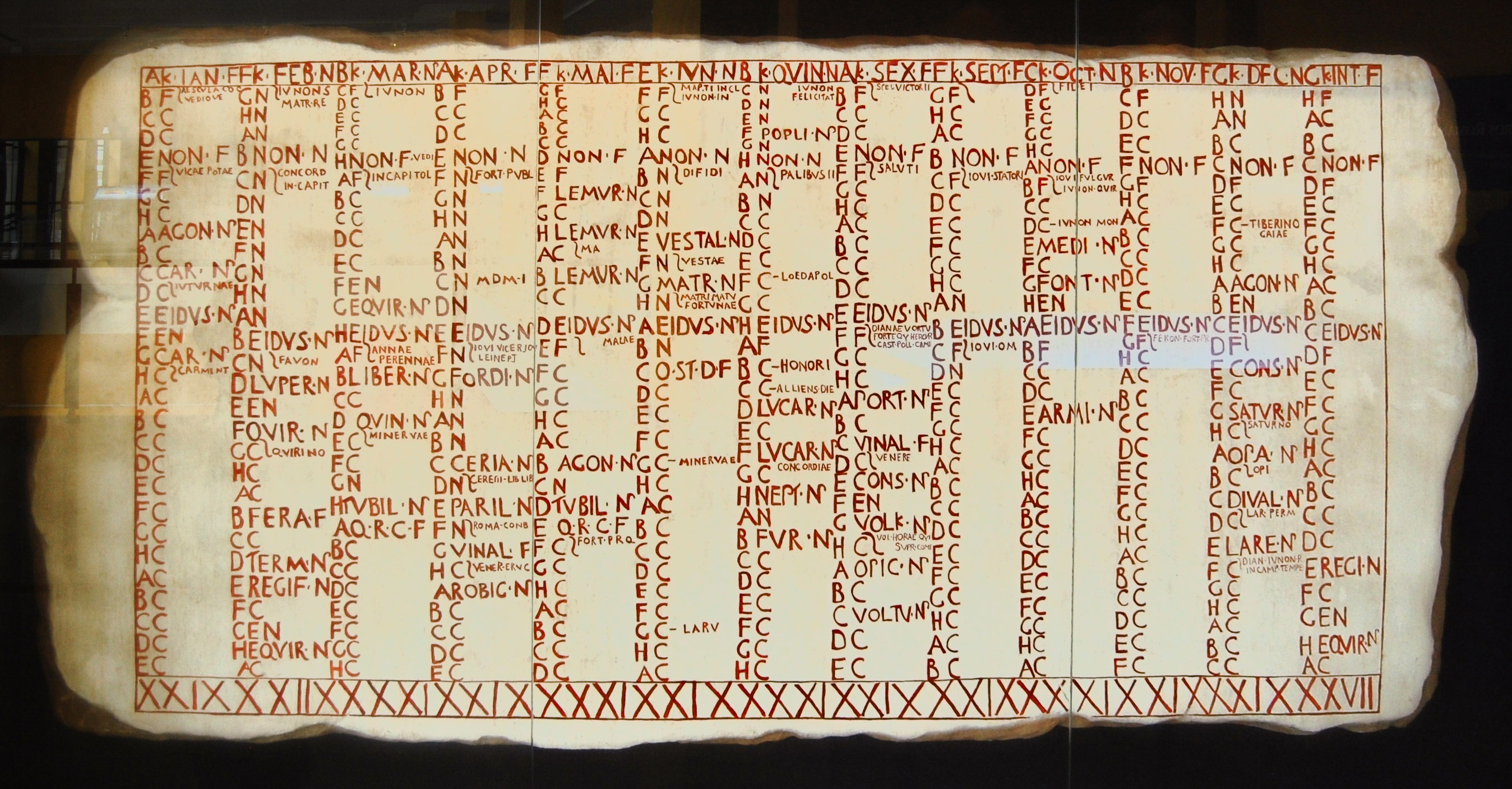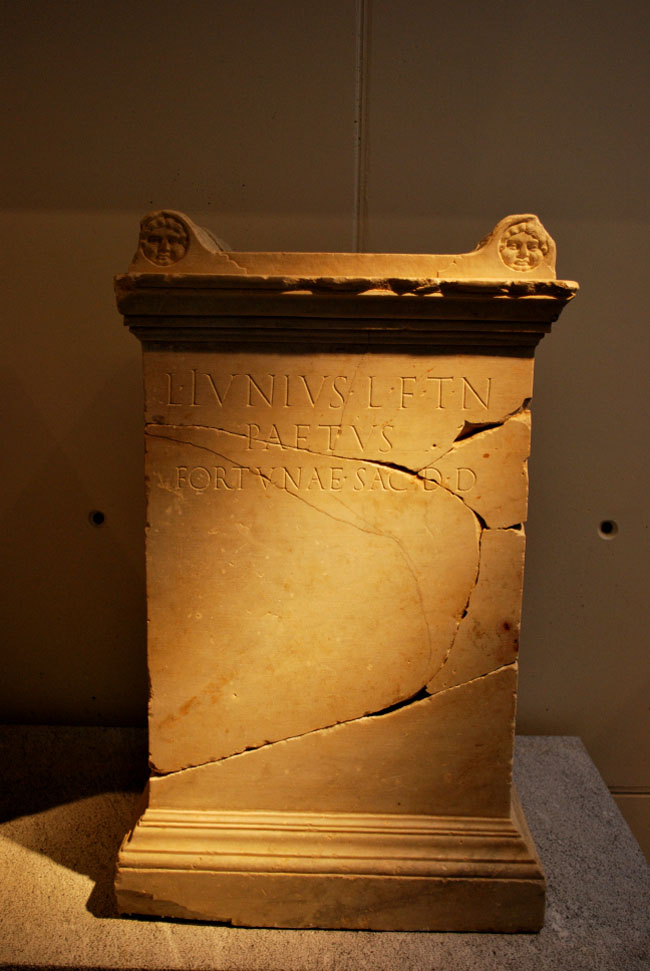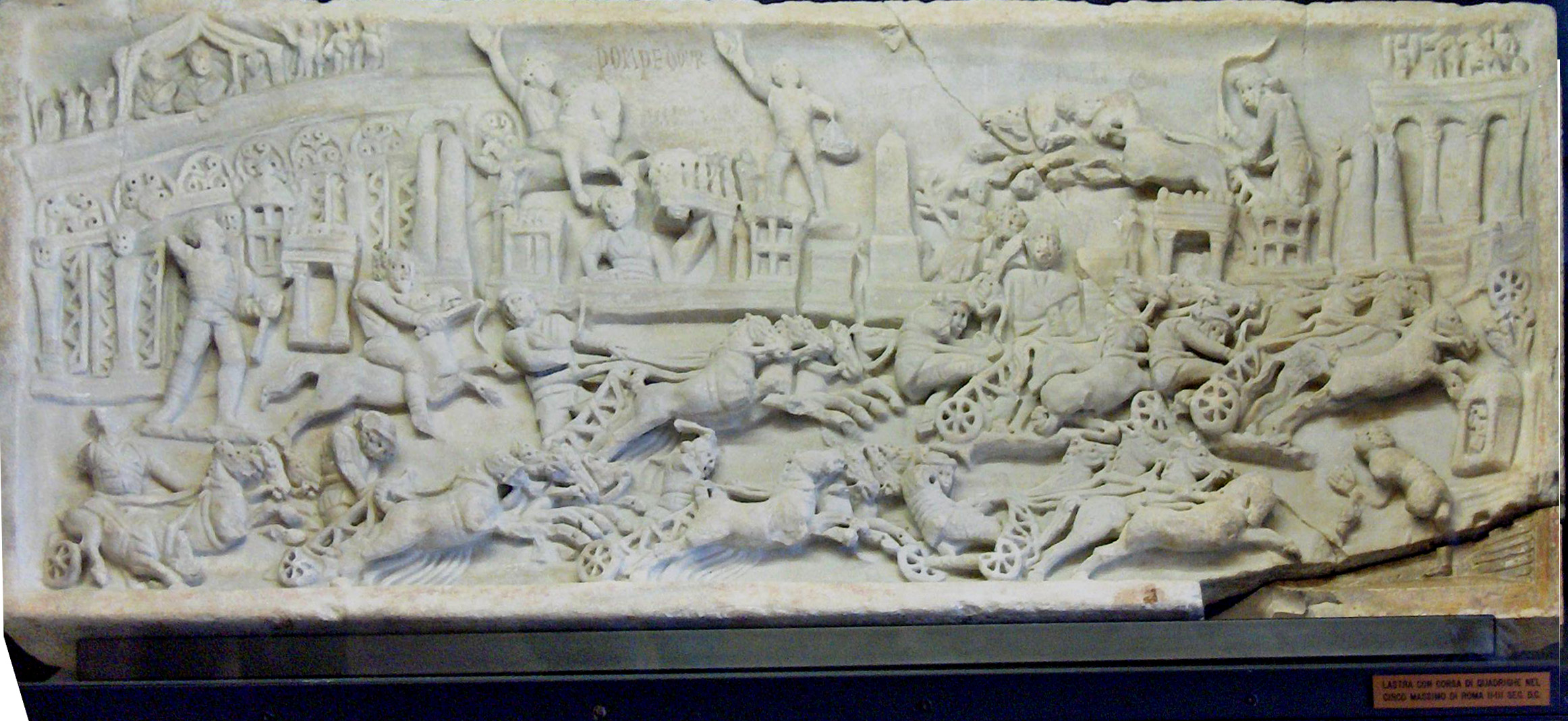|
Maius
''Maius'' or ''mensis Maius'' (May) was the fifth month of the ancient Roman calendar in the classical period, following '' Aprilis'' (April) and preceding '' Iunius'' (June). On the oldest Roman calendar that had begun with March, it was the third of ten months in the year. May had 31 days. The Romans considered May an infelicitous month. Although it began with one of the most notoriously licentious holidays of the Roman calendar, the Games of Flora ''( Ludi Florae)'', the middle of the month was devoted to propitiating the '' lemures'', the restless shades of the dead. Dates The Romans did not number days of a month sequentially from the 1st through the last day. Instead, they counted back from the three fixed points of the month: the Nones (5th or 7th, depending on the length of the month), the Ides (13th or 15th), and the Kalends (1st) of the following month. Thus the last day of May was the ''pridie Kalendas Iunias,'' "day before the Kalends of June". Roman counting was in ... [...More Info...] [...Related Items...] OR: [Wikipedia] [Google] [Baidu] |
Roman Calendar
The Roman calendar was the calendar used by the Roman Kingdom and Roman Republic. Although the term is primarily used for Rome's pre-Julian calendars, it is often used inclusively of the Julian calendar established by Julius Caesar in 46 BC. According to most Roman accounts, #Romulus, their original calendar was established by their Roman legend, legendary list of kings of Rome, first king Romulus. It consisted of ten months, beginning in spring with March and leaving winter as an unassigned span of days before the next year. These months each had 30 or 31 days and ran for 38 nundinal cycles, each forming a kind of eight-day weeknine days inclusive counting, counted inclusively in the Roman mannerand ending with religious rituals and a Roman commerce, public market. This fixed calendar bore traces of its origin as an observational calendar, observational lunar calendar, lunar one. In particular, the most important days of each monthits kalends, nones (calendar), nones, a ... [...More Info...] [...Related Items...] OR: [Wikipedia] [Google] [Baidu] |
Iunius (month)
''Mensis Iunius'' or ''Iunius'', also ''Junius'' (June), was the sixth month of the Roman calendar of the classical period, following ''Maius'' (May). In the oldest calendar attributed by the Romans to Romulus, ''Iunius'' had been the fourth month in a ten-month year that began with March ''( Martius,'' "Mars' month"). The month following June was thus called '' Quinctilis'' or ''Quintilis'', the "fifth" month. ''Iunius'' had 29 days until a day was added during the Julian reform of the calendar in the mid-40s BC. The month that followed ''Iunius'' was renamed ''Iulius'' (July) in honour of Julius Caesar. Name of the month In his poem on the Roman calendar, Ovid has three goddesses present three different derivations of the name ''Iunius''. Juno asserts that the month is named for her. Juventas ("Youth") pairs ''Iunius'' with ''Maius'': the former, she says, comes from ''junior'', "a younger person", in contrast to ''maiores'' or the "elders" for whom May was named. Juno's own ... [...More Info...] [...Related Items...] OR: [Wikipedia] [Google] [Baidu] |
Aprilis
''Aprilis'' or ''mensis Aprilis'' (April) was the fourth month of the ancient Roman calendar in the classical period, following '' Martius'' (March) and preceding ''Maius'' (May). On the oldest Roman calendar that had begun with March, ''Aprilis'' had been the second of ten months in the year. April had 29 days on calendars of the Roman Republic, with a day added to the month during the reform in the mid-40s BC that produced the Julian calendar. April was marked by a series of festivals devoted to aspects of rural life, since it was a busy month for farmers. As Rome became more urbanized, the significance of some ceremonies expanded, notably the Parilia, an archaic pastoral festival celebrated as the "birthday" ''( dies natalis)'' or founding day of Rome. The month was generally preoccupied with deities who were female or ambiguous in gender, opening with the Feast of Venus on the Kalends. Name of the month The Romans thought that the name ''Aprilis'' derived from ''aperio, a ... [...More Info...] [...Related Items...] OR: [Wikipedia] [Google] [Baidu] |
Feriae Conceptivae
Festivals in ancient Rome were a very important part of Roman religious life during both the Republican and Imperial eras, and one of the primary features of the Roman calendar. ''Feriae'' ("holidays" in the sense of "holy days"; singular also ''feriae'' or ''dies ferialis'') were either public ''(publicae)'' or private ''( privatae)''. State holidays were celebrated by the Roman people and received public funding. Games ''(ludi)'', such as the Ludi Apollinares, were not technically ''feriae'', but the days on which they were celebrated were '' dies festi'', holidays in the modern sense of days off work. Although ''feriae'' were paid for by the state, ''ludi'' were often funded by wealthy individuals. ''Feriae privatae'' were holidays celebrated in honor of private individuals or by families. This article deals only with public holidays, including rites celebrated by the state priests of Rome at temples, as well as celebrations by neighborhoods, families, and friends held s ... [...More Info...] [...Related Items...] OR: [Wikipedia] [Google] [Baidu] |
Lemures
The were shades or spirits of the restless or malignant dead in Roman religion, sometimes used interchangeably with the term (from Latin , 'mask'). The term was first used by the Augustan poet Horace (in Epistles 2.2.209), and was the more common literary term during the Augustan era, with being used only once by Horace. However, is also uncommon: Ovid being the other main figure to employ it, in his ''Fasti'', the six-book calendar poem on Roman holidays and religious customs. Later the two terms were used nearly or completely interchangeably, e.g. by St. Augustine in ''De Civitate Dei''. The word can be traced to the Proto-Indo-European stem *', which also appears in the name of the Greek monster Lamia. Description ' may represent the wandering and vengeful spirits of those not afforded proper burial, funeral rites or affectionate cult by the living: they are thus not attested by tomb or votive inscriptions. Ovid interprets them as vagrant, unsatiated and potenti ... [...More Info...] [...Related Items...] OR: [Wikipedia] [Google] [Baidu] |
Kalends
The calends or kalends () is the first day of every month in the Roman calendar. The English word "calendar" is derived from this word. Use The Romans called the first day of every month the ''calends'', signifying the start of a new lunar phase. On this day, the pontiffs would announce the number of days until the next month at the Curia Calabra; in addition, debtors had to pay off their debts on this day. These debts were inscribed in the ''kalendaria'', effectively an accounting book. Modern calendars count the number of days ''after'' the first of each month; by contrast, the Roman calendar counted the number of days ''until'' certain upcoming dates (such as the calends, the nones or the ides). The day before the calends was called ''pridie kalendas'', but the day before that was counted as the "third day", as Romans used inclusive counting. To calculate the day of the calends of the upcoming month, counting the number of days remaining in the current month is necessa ... [...More Info...] [...Related Items...] OR: [Wikipedia] [Google] [Baidu] |
Circus (building)
A ancient Rome, Roman circus (from the Classical Latin, Latin word that means "circle") was a large open-air venue used mainly for chariot racing, chariot races, although sometimes serving other purposes. It was similar to the Ancient Greece, ancient Greek hippodrome. Along with Roman theatre (structure), theatres and Roman amphitheatre, amphitheatres, circuses were one of the main entertainment venues at the time. Similar buildings, called ''stadium, stadia'' were used for Panhellenic Games, Greek-style athletics particularly in the eastern, Greek speaking, part of the empire, but these were typically smaller than circuses. According to Edward Gibbon the Roman people, at the start of the 5th century AD: Architectural design The performance space of the Roman circus was normally, despite its name, an oblong rectangle of two linear sections of race track, separated by a median strip running along the length of about two thirds the track, joined at one end with a semicircular ... [...More Info...] [...Related Items...] OR: [Wikipedia] [Google] [Baidu] |
Dies Religiosus
The vocabulary of ancient Roman religion was highly specialized. Its study affords important information about the religion, traditions and beliefs of the ancient Romans. This legacy is conspicuous in European cultural history in its influence on later juridical and religious vocabulary in Europe, particularly of the Christian Church. This glossary provides explanations of concepts as they were expressed in Latin pertaining to religious practices and beliefs, with links to articles on major topics such as priesthoods, forms of divination, and rituals. For theonyms, or the names and epithets of gods, see List of Roman deities. For public religious holidays, see Roman festivals. For temples see the List of Ancient Roman temples. Individual landmarks of religious topography in ancient Rome are not included in this list; see Roman temple. __NOTOC__ Glossary A abominari The verb ''abominari'' ("to avert an omen", from ''ab-'', "away, off," and ''ominari'', "to pronounce on an ... [...More Info...] [...Related Items...] OR: [Wikipedia] [Google] [Baidu] |
Roman Empire
The Roman Empire ruled the Mediterranean and much of Europe, Western Asia and North Africa. The Roman people, Romans conquered most of this during the Roman Republic, Republic, and it was ruled by emperors following Octavian's assumption of effective sole rule in 27 BC. The Western Roman Empire, western empire collapsed in 476 AD, but the Byzantine Empire, eastern empire lasted until the fall of Constantinople in 1453. By 100 BC, the city of Rome had expanded its rule from the Italian peninsula to most of the Mediterranean Sea, Mediterranean and beyond. However, it was severely destabilised by List of Roman civil wars and revolts, civil wars and political conflicts, which culminated in the Wars of Augustus, victory of Octavian over Mark Antony and Cleopatra at the Battle of Actium in 31 BC, and the subsequent conquest of the Ptolemaic Kingdom in Egypt. In 27 BC, the Roman Senate granted Octavian overarching military power () and the new title of ''Augustus (title), Augustus'' ... [...More Info...] [...Related Items...] OR: [Wikipedia] [Google] [Baidu] |
Ludi
''Ludi'' (Latin:games; plural of "ludus") were public games held for the benefit and entertainment of the Roman people (''populus Romanus''). ''Ludi'' were held in conjunction with, or sometimes as the major feature of, Roman religious festivals, and were also presented as part of the cult of state. The earliest ''ludi'' were horse races in the circus (''ludi circenses''). Animal exhibitions with mock hunts ('' venationes'') and theatrical performances (''ludi scaenici'') also became part of the festivals. Because some of these entertainments are not competitive "games", ''ludi'' may also be translated more generally as "shows". Days on which ''ludi'' were held were public holidays, and no business could be conducted—"remarkably," it has been noted, "considering that in the Imperial era more than 135 days might be spent at these entertainments" during the year. Although their entertainment value may have overshadowed religious sentiment at any given moment, even in lat ... [...More Info...] [...Related Items...] OR: [Wikipedia] [Google] [Baidu] |




